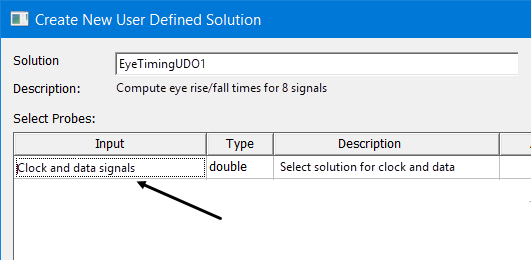Dynamic Probes
In addition to named probes and properties, UDOs can specify named dynamic probes. The difference between probes and dynamic probes is that while the end-user of UDO specifies the complete trace definition for probe, the expression for dynamic probe is specified by UDO code itself and not by the end-user. This allows UDOs to access the data for probes without having the end-user enter each individual probe. For example a UDO can access data for a huge S matrix for a 100 port design without requiring the end-user to enter the probe information for each of those 10,000 quantities. Each dynamic probe is associated with a named probe that is entered by the user; and information about solution, context, and intrinsic variables is used from user-selected probe. However multiple dynamic probes can be associated with the same user-selected probe. The dynamic probes are acquired from UDOs at the time of trace computation and not at the time of creation of user-defined solution.

This means that you select solution, context, and values of intrinsic variables just once; and the same information is used (in this case) for all clock and data signals. The expression for those signals comes from the UDO code.
Related Topics
User-Defined Outputs: An Introduction
Named Probes and Properties in User-Defined Outputs
